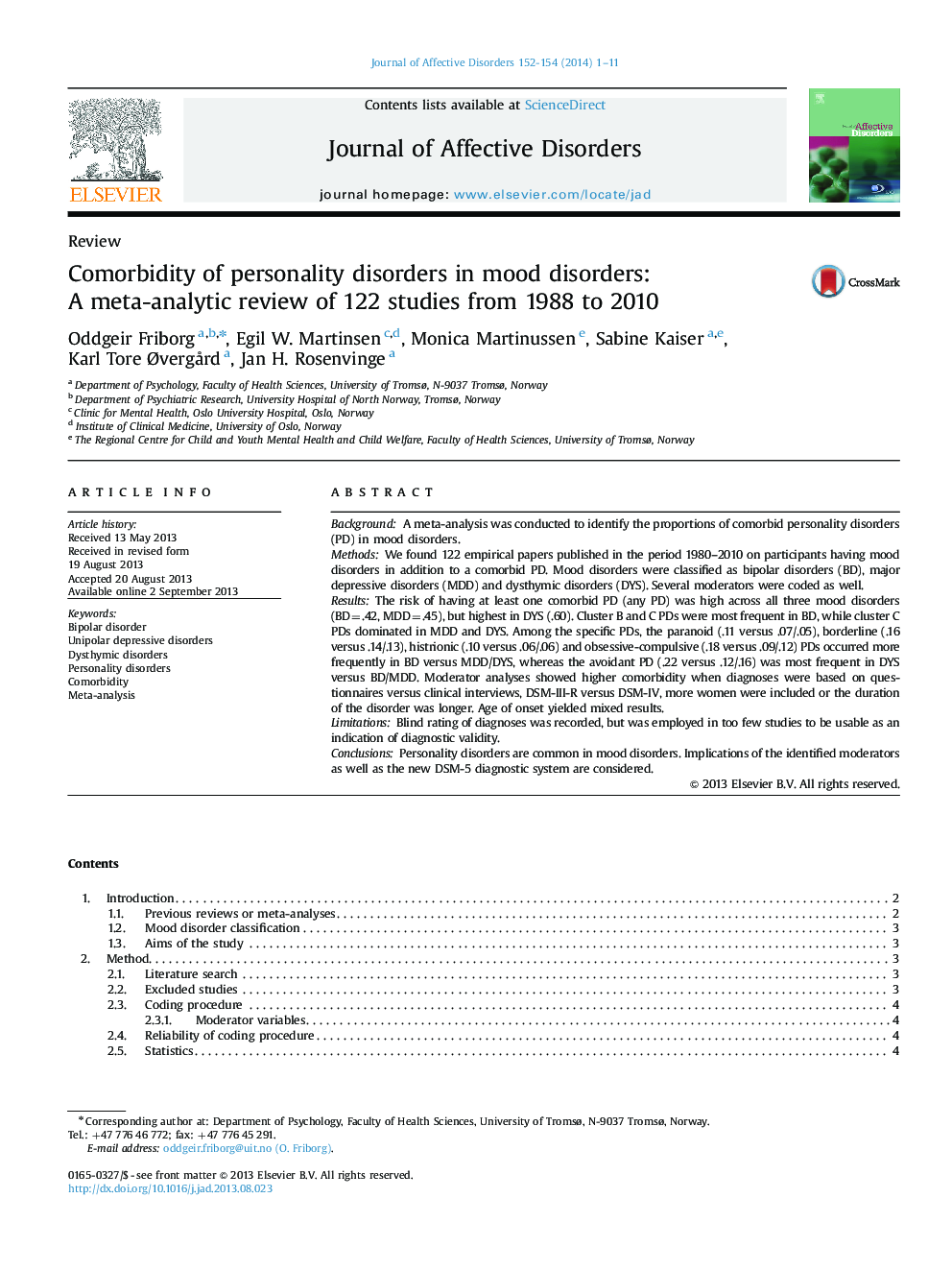| کد مقاله | کد نشریه | سال انتشار | مقاله انگلیسی | نسخه تمام متن |
|---|---|---|---|---|
| 6233086 | 1608171 | 2014 | 11 صفحه PDF | دانلود رایگان |
BackgroundA meta-analysis was conducted to identify the proportions of comorbid personality disorders (PD) in mood disorders.MethodsWe found 122 empirical papers published in the period 1980-2010 on participants having mood disorders in addition to a comorbid PD. Mood disorders were classified as bipolar disorders (BD), major depressive disorders (MDD) and dysthymic disorders (DYS). Several moderators were coded as well.ResultsThe risk of having at least one comorbid PD (any PD) was high across all three mood disorders (BD=.42, MDD=.45), but highest in DYS (.60). Cluster B and C PDs were most frequent in BD, while cluster C PDs dominated in MDD and DYS. Among the specific PDs, the paranoid (.11 versus .07/.05), borderline (.16 versus .14/.13), histrionic (.10 versus .06/.06) and obsessive-compulsive (.18 versus .09/.12) PDs occurred more frequently in BD versus MDD/DYS, whereas the avoidant PD (.22 versus .12/.16) was most frequent in DYS versus BD/MDD. Moderator analyses showed higher comorbidity when diagnoses were based on questionnaires versus clinical interviews, DSM-III-R versus DSM-IV, more women were included or the duration of the disorder was longer. Age of onset yielded mixed results.LimitationsBlind rating of diagnoses was recorded, but was employed in too few studies to be usable as an indication of diagnostic validity.ConclusionsPersonality disorders are common in mood disorders. Implications of the identified moderators as well as the new DSM-5 diagnostic system are considered.
Journal: Journal of Affective Disorders - Volumes 152â154, January 2014, Pages 1-11
